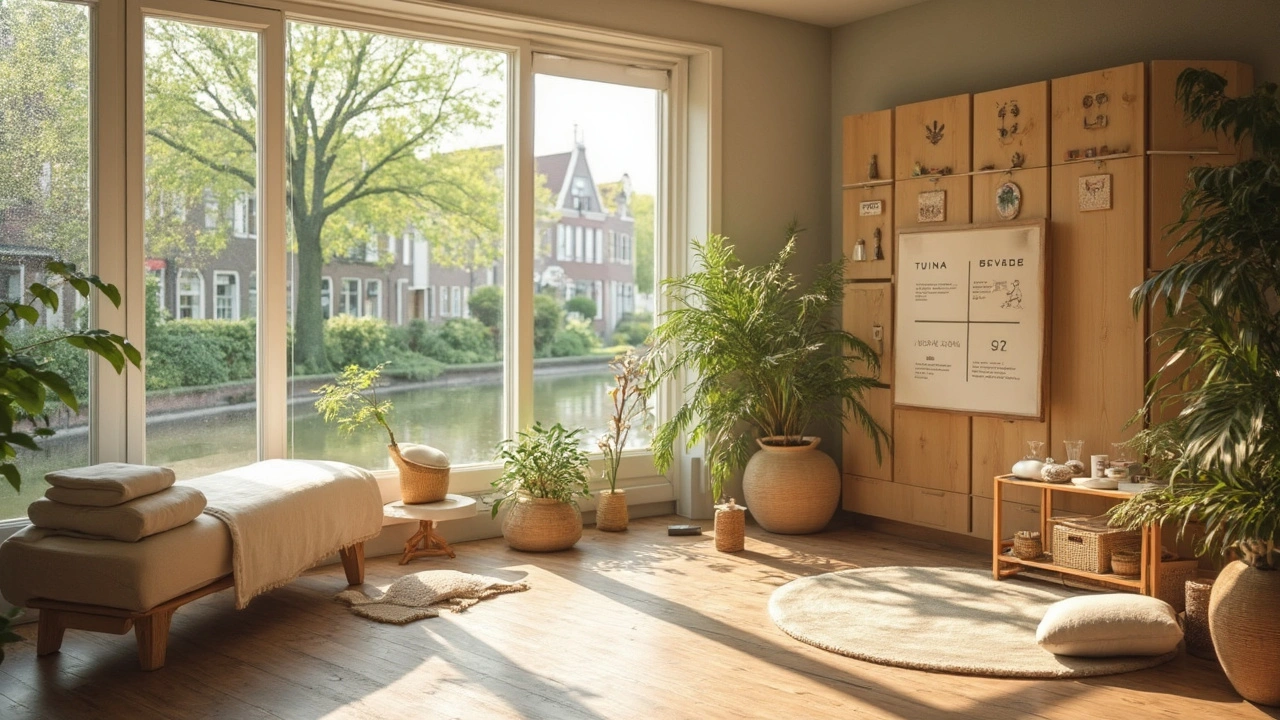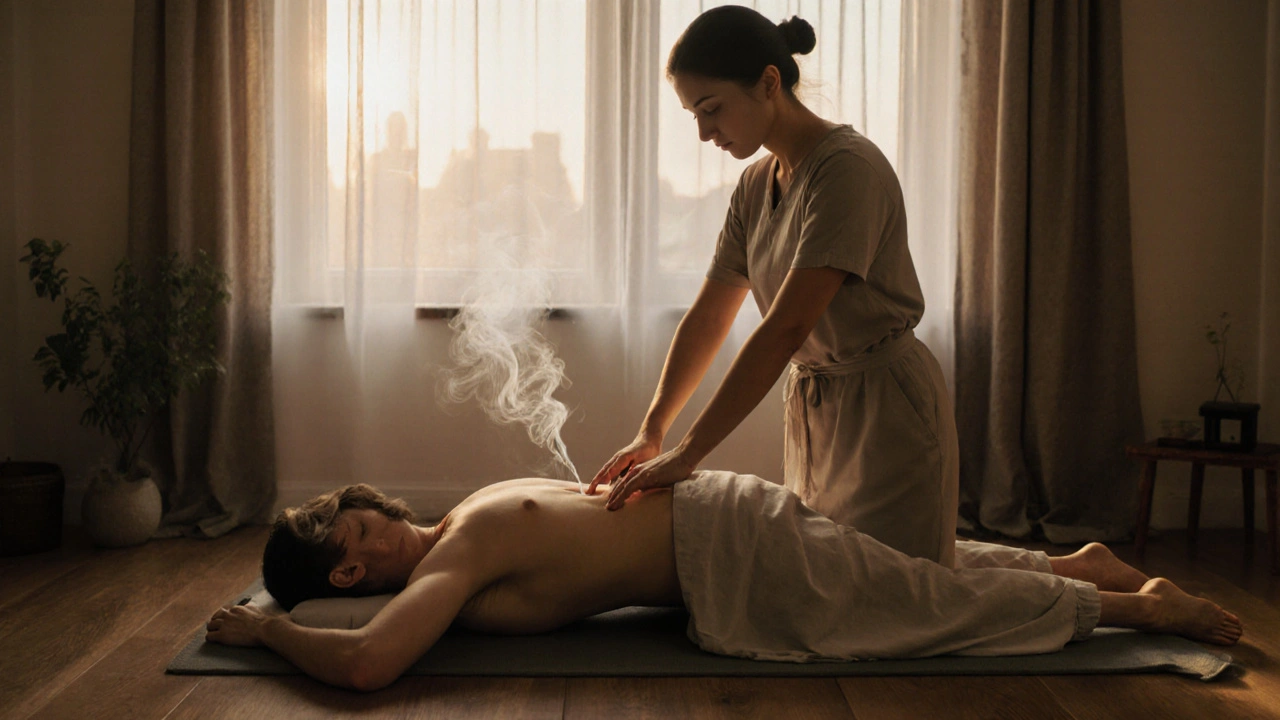What Sets Tuina Massage Apart: Comparing Chinese Bodywork to Western Therapies

Most folks think all massages are basically the same — you lie down, someone rubs your back, and you (hopefully) walk away feeling less like a knotted pretzel. But Tuina massage? That’s a different animal. Walk into a Tuina clinic, and you’ll be greeted with techniques older than the Roman Colosseum, yet they still hold their own against today’s popular massage therapies. Curious yet? There’s a reason people in China have been trusting Tuina for everything from migraines to stiff necks for centuries. Whether you’re a die-hard fan of deep tissue, a Swedish devotee, or someone just looking for natural ways to ditch daily stress, Tuina throws some serious curveballs into the usual massage game.
Tuina Massage: Definition and Context
If you’ve never tried Tuina, let’s clear up what it even is. Pronounced "twee-nah," this style hails from Traditional Chinese Medicine (TCM), with a history that goes back more than 2,000 years. Picture Tuina as the older, wiser cousin of your favorite massage technique — one that doesn’t just chase away tension, but aims to heal from the inside out. Where other massages focus mostly on muscles, Tuina is all about Qi (that’s your body’s energy), meridians (think of them as highways for your Qi), and balancing your internal systems.
What really makes Tuina unique is its philosophy. According to TCM, many health issues are caused by blockages or imbalances in Qi flow. Tuina’s main goal is to get that Qi moving smoothly. It’s not just about working out a kink in your shoulder — it treats the entire body and looks for root causes, not just symptoms. Think less band-aid, more root repair. The therapist might use rolling, kneading, pressing, and even some gentle shaking techniques tailored to your specific needs. And if you’re picturing a spa-like environment with scented oils and soft music, think again. Many Tuina sessions feel more clinical, a bit like physical therapy with ancient roots. Not sure if you’d like that? Keep reading, because once you see the benefits, you might be surprised!
Tuina isn’t just about back pain, either. Chinese medicine practitioners often recommend it for insomnia, anxiety, digestive problems, even menstrual pain. In fact, many hospitals in China have a Tuina department right next to acupuncture and herbal medicine. It’s still way less common in the West, but you can find legit Tuina clinics in big cities all over the world now—especially in neighborhoods with large Chinese communities.
Benefits of Tuina Massage: Real-Life Advantages
So, what’s in it for you? Here’s where things get juicy: Tuina doesn’t just leave you feeling relaxed. Several clinical studies have shown real benefits — we’re talking pain reduction, improved mobility, even help with chronic health conditions. One 2021 study from the Journal of Alternative and Complementary Medicine showed Tuina can lower lower-back pain as effectively as prescription drugs, minus the side effects. Ever had a regular massage and thought “That was nice, but my headache is back already”? With Tuina, the effects tend to hang around longer.
This therapy isn’t shy when it comes to results. People with arthritis love it for the joint relief and increased range of motion. Athletes use Tuina for faster recovery after tough workouts, since it helps flush toxins and improves circulation. If you’re battling stress, Tuina can also bring on deep relaxation. But unlike Swedish or hot stone, which just nudges your body into calm mode, Tuina pushes your system toward actual balance. So yeah, you might sleep better, digest food easier, or just feel a newfound sense of steadiness you didn’t expect from a massage table.
A common worry? The pressure. Tuina can feel intense, especially compared to gentle spa massages. But the therapist will always tailor techniques to your comfort, even using lighter handwork or focusing on specific points instead of broad muscle groups. Regular users often say their body adapts over time, making each session more effective than the last. One urban legend even claims that in Shanghai, Olympic athletes line up for Tuina before big events. As one Beijing sports doctor puts it,
“Tuina wakes up your whole nervous system — it doesn’t just fix a muscle, it recharges your body.”
Wondering about safety? When you see a trained practitioner, the risks are pretty minimal, though, as with any bodywork, let them know about health issues ahead of time. Tuina is especially beneficial if you’re dealing with musculoskeletal discomfort, stress, or chronic pain. And if you just want to see what all the fuss is about, most Tuina therapists are happy to walk you through a gentle intro session.

Types of Tuina Massage and How to Find Services Near You
Not all Tuina is built the same. There are actually two main schools: one focuses on adults, the other on children. Pediatric Tuina might sound wild, but in China, it’s been used for centuries to ease colic, colds, and sleep troubles in kids—without needles or drugs. For adults, Tuina can get as specific as your problem requires. A skilled practitioner might use their hands, elbows, or even knees to target points along your meridians. Some sessions include cupping or gua sha (scraping), though pure Tuina sticks to the hands-on stuff.
Finding the right therapist can feel tricky, especially if you don’t live in a city with a large Chinese community. But thanks to growing demand, more clinics are popping up across the country. Start by searching for "Tuina massage" or "Chinese bodywork" in your city. If you’re in a major urban center, check wellness centers, acupuncture clinics, or even integrative medicine departments in local hospitals. Look for practitioners with legit credentials: in the U.S., Tuina often requires certification through the National Certification Commission for Acupuncture and Oriental Medicine (NCCAOM) or state licensure. A good tip? Scroll reviews and ask about experience treating your specific issue.
Want a shortcut? If you can, visit Chinatown districts — in places like San Francisco, New York, or London, you’ll find Tuina clinics mixed in with herbal pharmacies. If you’re not sure where to go, grab a cup of tea at a local café and ask for recommendations; word-of-mouth is gold in the Tuina world.
There’s even been a recent spike in video tutorials and online mapping tools that spotlight certified Tuina therapists nearby. Some booking platforms now let you filter by “Chinese bodywork” or “Tuina,” so you don’t have to sift through endless spa listings. Though virtual Tuina isn’t a thing (you really do need hands-on), these online resources make it easier to find a reputable provider.
What To Expect During a Tuina Session: Experience, Pricing, and Safety Tips
Your first Tuina session might defy your expectations. Forget scented candles or flowing music — sessions are practical, focused, and completely clothed (yep, you keep your clothes on, usually loose gym wear). The therapist will ask about your health and what’s bothering you, then get straight to work using their hands, fingers, knuckles, sometimes elbows. If you’ve had deep tissue massage, you’ll notice some similarities — but Tuina’s rhythm tends to be faster, and you might feel the practitioner working on specific pressure points rather than just smoothing out knots.
A typical session lasts about 30 to 60 minutes. The practitioner might use techniques like rolling, kneading, brushing, pressing, holding — and sometimes quick, gentle pushing or pulling. You may even hear a few pops or cracks; that’s normal. If it ever hurts too much, just say something — communication is key, since Tuina can get intense for newbies. Afterward, don’t be surprised if you feel energized, or even a bit sore (like after a workout). Many fans swear by the “floaty” feeling Tuina brings, describing it as a mix of post-yoga clarity and post-gym muscle relief.
Curious about costs? Here’s a little breakdown:
| Therapy | Average Session Cost | Duration |
|---|---|---|
| Tuina Massage | $60-$120 | 45-60 min |
| Swedish Massage | $80-$150 | 60 min |
| Deep Tissue Massage | $90-$170 | 60 min |
| Acupuncture (often paired with Tuina) | $60-$110 | 30-45 min |
Most clinics offer online booking, and some even let you fill out health forms ahead of time. If you want a combined approach—say, acupuncture and Tuina in one visit—ask about bundle pricing. And don’t forget to check if your insurance covers complementary health therapies. Some plans, especially in cities like LA or NYC, will reimburse part or all of your visit if Tuina is recommended by your doctor.
Worried about safety? Tuina is considered low risk, but a real professional will always ask about health concerns (like osteoporosis, pregnancy, or skin problems). If something feels off during your session, say so. Tuina is all about communication and adjustment. And pro tip—drink water afterward: it helps flush the toxins your body just released.
| Tuina Massage | Swedish Massage | Deep Tissue Massage | Acupuncture |
|---|---|---|---|
| Ancient Chinese bodywork, focuses on Qi flow, targets meridians, treats root causes | Western classic, gentle, focuses on muscles and relaxation | Targets deep muscle/fascia for chronic pain or injuries, slower strokes | Uses needles to unblock Qi, often paired with Tuina for synergistic effect |
| Fully clothed session, no oils usually | Usually requires undressing to underwear, uses oils | Similar to Swedish but more intense, usually undressed | Clothed or partially clothed, needle insertion |
| Common benefits: pain relief, improved flexibility, stress reduction, boosts immunity | Benefits: relaxation, reduced anxiety, increased blood flow | Benefits: injury recovery, chronic pain relief | Benefits: insomnia, allergies, wide systemic issues |
| Often paired with herbal medicine, gua sha, cupping | Rarely combined with other therapies | Commonly paired with physical therapy | Often paired with Tuina or moxibustion |

FAQ: Your Questions About Tuina Massage Answered
- Does Tuina hurt? It can be intense, but it shouldn’t be painful. If you’re uncomfortable, tell your practitioner to adjust the pressure or techniques.
- Can Tuina help with chronic conditions? Yes! Studies show Tuina helps with chronic pain, arthritis, migraines, digestive issues, and stress-related symptoms.
- Is Tuina safe if I’m pregnant? Generally, yes, but always consult your doctor first and tell your Tuina therapist. They’ll avoid certain points and modify techniques for safety.
- Do I need to undress? Nope, keep your clothes on—just wear something comfortable and loose.
- How is Tuina different from acupuncture? No needles here! Both focus on balancing Qi, but Tuina uses hands-on techniques while acupuncture uses tiny needles.
- How many sessions do I need? It depends. Some people feel better after one session, others need a short series for chronic issues. Your practitioner will create a custom plan for you.
Feeling curious? Give tuina massage a shot the next time you want something seriously different from the usual massage. Ready to recharge your body the ancient Chinese way? Book your session today and let your Qi do the talking.


